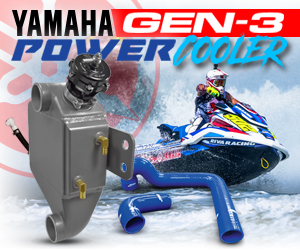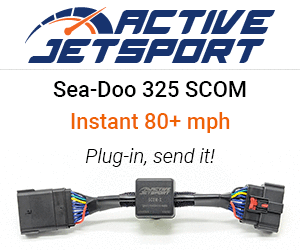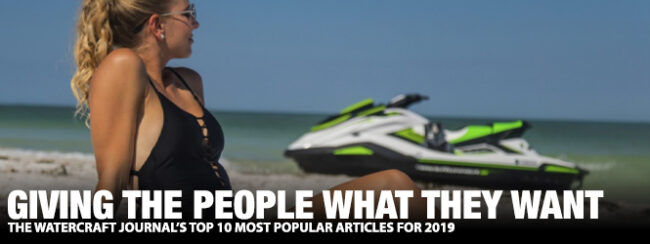
It’s becoming cliché to comment on how quickly the previous year has come and gone, and depending on one’s life view, the passing of 2019 has been greeted with elation or exhaustion. For The Watercraft Journal, is was a year marked with some major firsts as well as continued, reliable publishing of the industry’s best personal watercraft news, reviews and feature articles. People came to WCJ in droves in 2019, nearly 675,000 times, in fact (and that’s not including hundreds of thousands of new views to our YouTube channel).
So how about 2019? What were the most popular stories published this outgoing year? Interestingly enough, we saw none of our industry-leading race coverage break into the Top 50. Despite publishing racing coverage faster, with more detail, results and pictures than anywhere else, the worldwide draw was meager. Instead, the highest ranking stories were almost entirely real world, hands-on reviews on the newest PWC, the biggest reveals of new watercraft, and of course, the juiciest gossip on potential future watercraft.
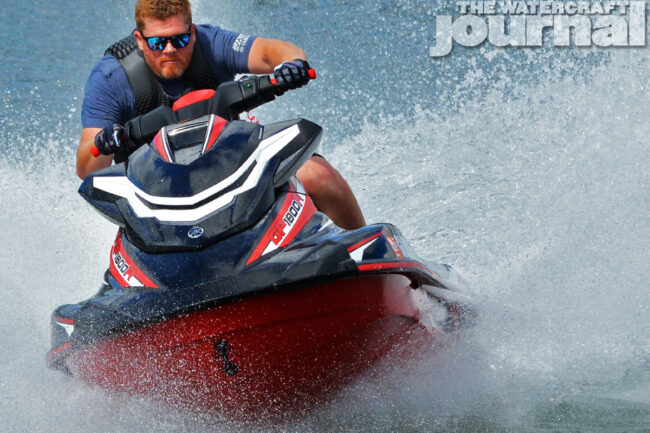
10. Uneven Playing Field: 2019 Yamaha GP1800R WaveRunner (Video)
It only made sense that the model following last year’s Watercraft of The Year award winner would also be one of the year’s most popular articles. The Watercraft Journal’s review of the 2019 Yamaha GP1800R WaveRunner heralded the return of the brand’s infamous “R” designation to a production watercraft. The last time an “R” adorned a WaveRunner was the 2008 GP1300R, the last 2-stroke “musclecraft” produced. Bringing back the “R” was no easy feat either; significant changes were needed to justify the rebranding of the winningest runabout in recent history.
Yamaha began by culling through what the racers and performance aftermarket were achieving. For 2019, the newly minted GP1800R received a new top loader intake grate, reinforced pump tunnel and elongated and sharply straked ride plate. The new plate radically improved the GP’s initial launch and overall attitude at speed, providing increased traction and hookup. 2019 also welcomed a new-and-improved VXR sharing the same lightweight NanoXcel2 material as the GP1800R, as well as the same intake grate and ride plate, and the super-fun EXR.
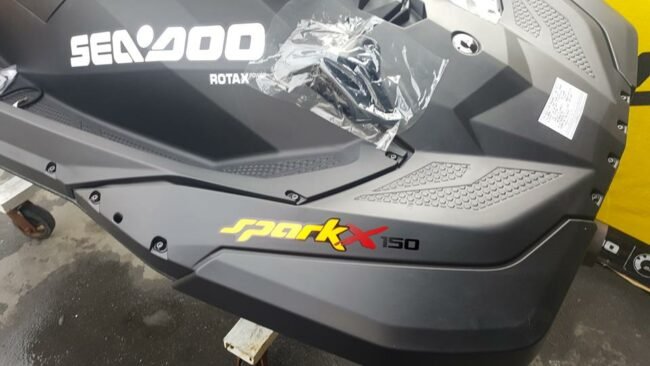
9. Vicious Rumors & Vile Gossip: Something Turbo This Way Comes
The impetus of this article began with a practical joke; Southern California Rec-Lite racer Justin Black thought a custom decal on his Spark would garner a few laughs on Facebook. The viral response was far more than he ever expected. Enthusiasts, particularly those harboring hopes for a “Spark X” were whipped into a frenzy believing Justin’s murdered-out Spark to be the function prototype rumored about on the message boards. Alas, such was not the case. Yet, what the post did manage to do was reignite the conversation of performance Rec-Lite watercraft.
The 110-horsepower Yamaha EXR was conspicuously banned from racing in Rec-Lite classes in 2019 leaving some to cry politics. Others saw the EXR as a proverbial gauntlet of challenge to Sea-Doo, provoking questions regarding potential turbo applications (borrowing heavily from existing Ski-Doo and Maverick powertrains). The Ski-Doo Renegade X RS Turbo features a 899cc 900 ACE Turbo pushing 12psi of forced induction to a maximum of 150-horsepower – and at a conservative 7,750rpm. Surely a properly-tuned Sea-Doo could spin above 8,600rpm without issue.

8. 2018 Yamaha vs Sea-Doo vs Kawasaki
Interestingly, this was far less of a shootout and was a brief overview of key features and characteristics of existing models and brands known thus far (the article was published in October 2017). Somehow it managed to pick up new legs in the middle of 2019 and went insanely viral; well before the confirmation of Kawasaki’s newfound charge into the Recreation segment with three new tiers of STX JetSkis, the redesigned Sea-Doo GTI lineup, or any revelations from Yamaha’s camp either. Frankly, we’re a little confused why this was so popular.
The biggest takeaway from this article’s popularity was first, the personal watercraft enthusiasts’ interest in a knock-down, blood-and-guts shootout between the three brands; and secondly, the revelation of which segment all three OE’s are focused on: Recreation. No, they’re not putting all their eggs into the Rec-Lite or Touring segments, and they’re definitely not counting on the top tier performance group to keep their lights on, it’s the mom-and-pop, fun-for-the-whole-family Recreation group of watercraft that makes the world turn.
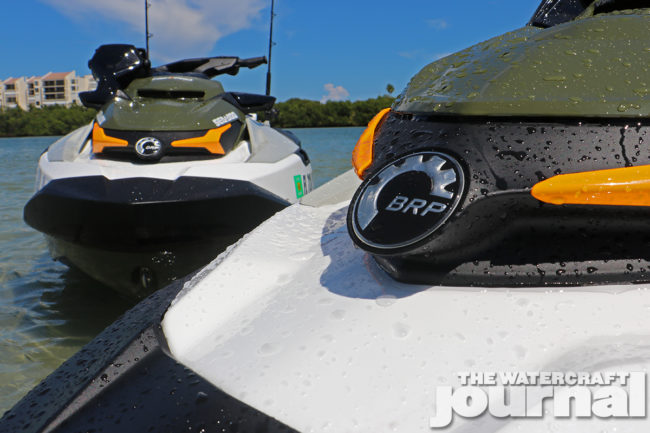
7. Hook, Line & Sinker: 2019 Sea-Doo Fish Pro (Video)
Admittedly, the 2019 Sea-Doo Fish Pro was this author’s pick to win the gold prize at this year’s Watercraft of The Year awards. Not only did I find my time on the Fish Pro immensely enjoyable, even when nothing was tugging at my lures, but genuinely a fresh and unique experience unlike any other I had had on a personal watercraft. The boldness of a OE manufacturer to dive head-first into the marketplace with a fully-equipped, ready-to-ride PWC fishing rig (save for rods, reels and bait) absolutely blows my mind.
It’s a bit satisfying to know how popular The Watercraft Journal’s review of the Fish Pro has been, particularly our video review on YouTube. Unconventional fishermen have stumbled across our review and collected valuable information before making a final purchase – and for that we’re grateful to have played a small part. The Fish Pro deserves all of the praise being heaped upon it, and hopefully the sport of PWC fishing grows to match (and eventually outpace) that of kayak fishing – because that just sounds like a total drag to me.
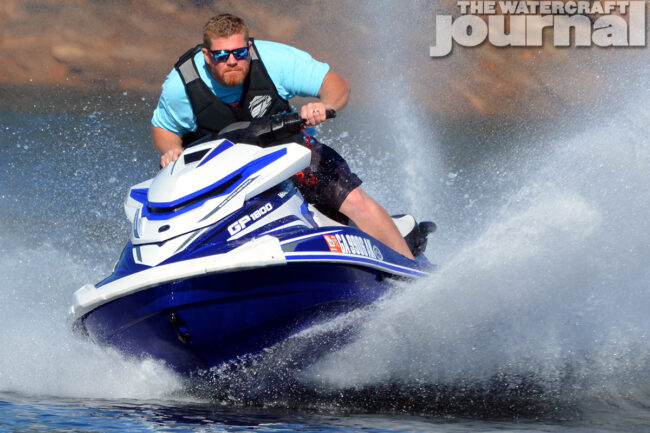
6. The Hits Keep Coming: 2018 Yamaha GP1800 WaveRunner
How ridiculous is this? The review of the 2018 Yamaha GP1800 not only broke into our Top 10 articles for 2019, but the review on the 2018 model was more popular than the 2019 unit! Frankly, we accredit it to the superior Yamaha Racing Blue-and-White livery (although the white bumpers and rub rails were an absolute pain in the rear to keep clean). Coming off of a major win as not only the winner of the envied Watercraft of The Year award, but its second consecutive year winning it, the 2018 GP1800 clearly had a lot of momentum behind it.
Interestingly, the differences between the 2018 and 2019 models were significant albeit subtle. Prior to the 2019 reveal, the “non-R” GP1800 had a nearly flat ride plate that ended abruptly at the transom. This lent itself towards leaning heavier on the nose. Equally, the intake grate was consisted of three vertical beams and a mild curved scoop. The two added up for a runabout that lacked in initial hookup, cavitating as the big 1,812cc SVHO engine spun wildly to pick up traction. The aftermarket quickly resolved both issues, inspiring Factory Yamaha to follow shortly thereafter.
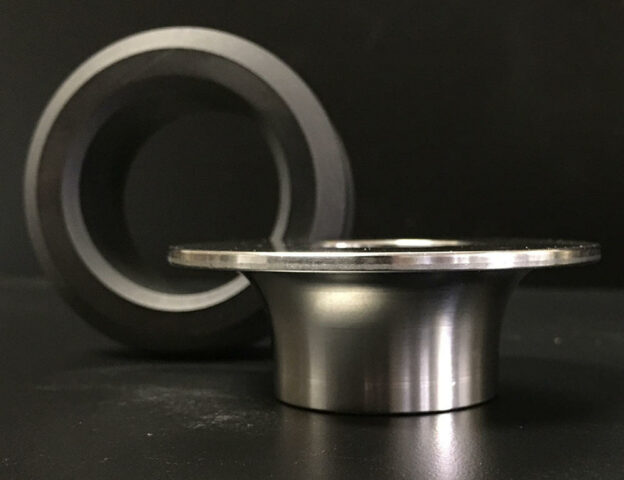
5. Debunking Myths & Better Understanding Sea-Doo’s Carbon Ring Seal
Among all of the mechanical and engineering differences between all three major OE manufacturers, the single most controversial is Sea-Doo’s use of the carbon ring seal. Instead of using a driveshaft seal like Kawasaki or Yamaha, the carbon ring seal is the “consumable” barrier sealing the inside of the hull from the outside as the prop shaft passes through it. The patented design is unique to the industry leader, and in recent years garnered quite a bit of infamy by online detractors, so The Watercraft Journal wanted to shed some light on it.
A preloaded billet hat presses up against the compressed carbon ring forming a low-friction seal, keeping outside water from penetrating the watertight hull. Unfortunately, the ring is susceptible to premature wear and eventual failure when the runabout is ran in shallow, sandy water; up beaches where sand and debris can permeate the ring; when excessive wave jumping can misalign the engine/powertrain; if the protective boot is not properly maintained; and several other instances which we outline. Understanding is the first step in maintenance and this article looked to help educate those looking to keep their Sea-Doo’s operational.
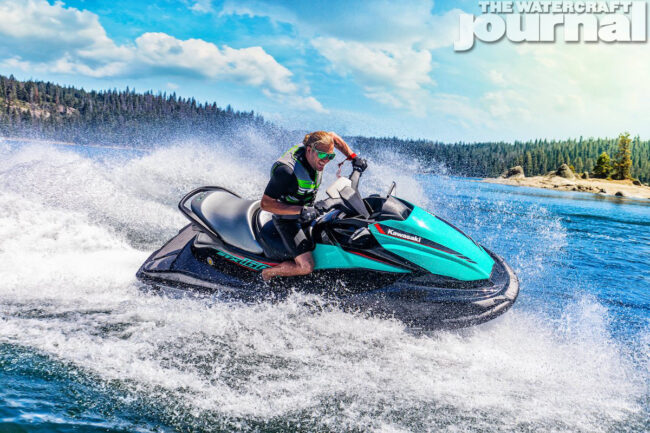
4. Vicious Rumors & Vile Gossip: Kawasaki’s Big Play for 2020; Two New STX-15F Models
If 2019 was stirred up about one subject it would be the future of Kawasaki JetSkis. Rumors of the brand’s departure from watersports were quickly debunked when grainy cellphone images of a prototype Recreation-segment runabout hit the internet. What was shown was not the final product (as seen in the image above) but a plain Jane red-and-white 2020 STX-160. The JetSki showed enough cues to affirm reports that the STX was redesigned from the bondline up – a new deck, seating, hood, etc.
Yet, what The Watercraft Journal got wrong was the redesigned hull to go with the new top half. Yes, much of the STX’s super-successful hull attributes carried over from the 17-year-old hull, but enough was added to give the runabout its own personality. In the images appeared to be a luxury-class tiered seat and Jetsounds sound system embedded into the footwells. The rider showed to be higher in the saddle with deeper footwells too. All of this stoked interest in Kawasaki again, and the final reveal showed not just one, but three new STX models to choose from! Very exciting!
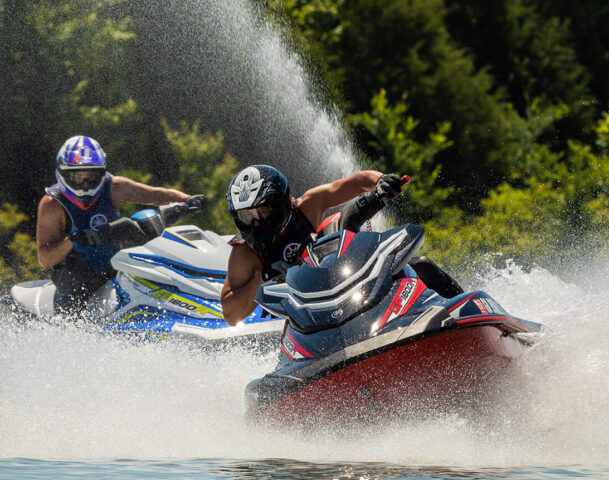
3. USCG Imposes New Small Craft Minimum Visibility Requirements
Oh my, was this a good one. Seven years into publishing The Watercraft Journal, and we still manage to sucker some poor folks into believing anything we publish on April 1st is anything but totally bogus malarkey. For 2019, we actually published two April Fool’s Day jokes, but of the pair this article spurred more vitriol, more ire in personal watercraft enthusiasts than anything else. So what was it? A totally made-up United States Coast Guard law requiring all PWC to run a “vertical sprayer”.
Known by Yamaha as a “visibility spout,” the vertical plume of water is to act as a long-distance identifier, similar to a flag atop a buggy whip on a ATV (“quad”). It’s also one of the first modifications people make to their Yamahas (removing it, that is). So conjuring up a totally fake minimum requirement addendum and decreeing that ALL watercraft – regardless of brand or model year – needed to run one or face severe penalties and fines drove people up the wall. Meanwhile, nobody seems to click the final hyperlink (which takes you to Rick Astley’s “Never Gonna Give You Up”). Oh well.
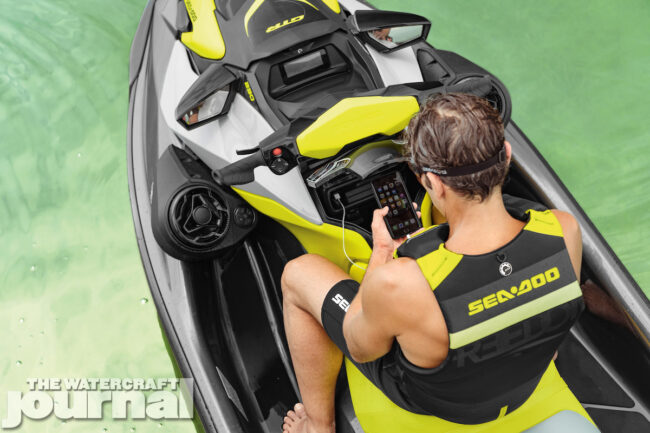
2. Gallery: Introducing The 2020 Sea-Doo Lineup
As you might be able to guess, a year’s worth of anticipation culminated in a big reveal for Sea-Doo’s 2020 lineup. Certain “must haves” were expected for the new decade, including a total redesign of the Recreation segment. Consisting of the various GTI offerings, the GTI-based Wake model and the supercharged GTR; many wondered what the future would bring Sea-Doo’s most prolific and popular-sellers. A whole new platform built using Sea-Doo’s Polytec material (this time 50-percent thicker with a fiberglass inner liner) was used for all of the GTI-based runabouts. The hull shape proved a huge winner, tracking smartly through chop, turning upon demand, and remaining balanced at idle.
Paired with the new Polytec (version 2.0) was an entirely new deck design. Borrowing heavily from the larger ST3 platform, the new Recreation segment machines employ the same engine inspection cover that integrates the Retractable Ski Pylon portal and retractable LinQ mounts. A redesigned front bin and massive glove box (which includes the waterproof phone case from the ST3) boost the GTI’s overall storage to that higher than the full-sized runabouts! And lastly, the 1503 Rotax engines were retired; replaced with two naturally-aspirated ACE 1630 outputs (130 and 170) as well as a 230-horsepower supercharged ACE 1630.
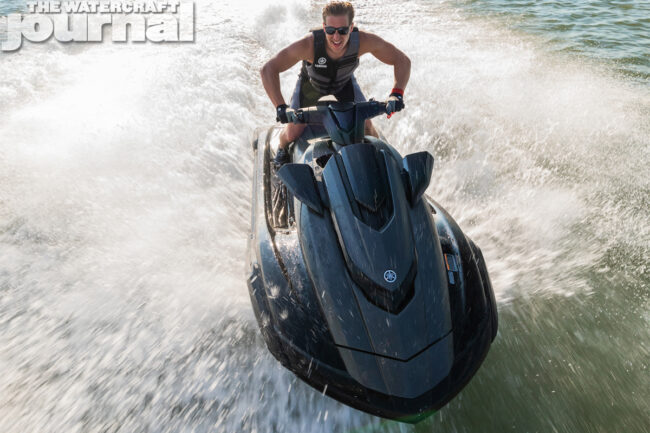
1. Gallery: Introducing the 2020 Yamaha WaveRunner Lineup
Albeit a little surprising, considering that not much was expected in the way of changes for 2020, the reveal of the new Yamaha WaveRunners was the single-most popular article on The Watercraft Journal in 2019. Apart from some splashy new colors, a very weird name change, and a whole slew of accessories, Yamaha Motor Corp. USA felt that nothing was broke, so there was no need to fix it. The recently redesigned FX platform was immediately well-received, so a slight switch up of coloring was all that was needed – including some very menacing gloss-on-flat black coloring for the FX SVHO and FX Limited SVHO.
In a way of further tying the two sportier Performance segment siblings together, Yamaha decided to rename the VXR the GP1800R HO and the GP1800R the GP1800R SVHO, making the engine the sole designation between the two. Lastly, as mentioned Yamaha’s Parts & Accessories division rolled out a series of unobtrusive add-ons to maximize your riding experience. Top of the list were a totally redesigned pair of wireless Exogear Speakers with 30-watt 4-inch woofers and separate tweeters that fit comfortably in the cup holders on the FX’s dashboard. There’s new storage bags, coolers, fishing rod holders and phone cases too – opening up a world of fun and exploration aboard a WaveRunner for you.




